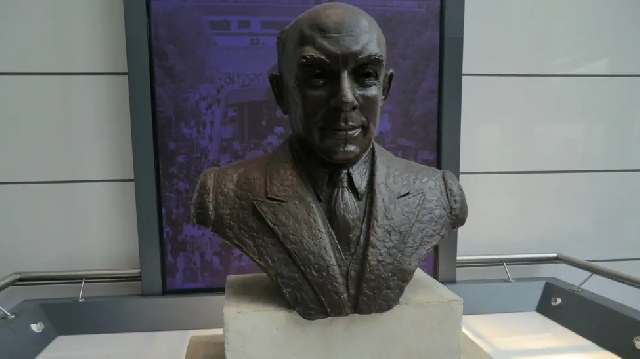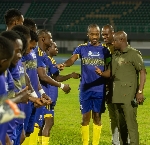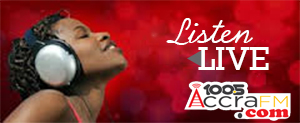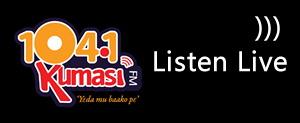Arthur Elvin: The man who saved Wembley Stadium
 Getty Images (Pic): Arthur Elvin ran Wembley Stadium for 30 years
Getty Images (Pic): Arthur Elvin ran Wembley Stadium for 30 years
When tens of thousands of fans fill Wembley Stadium for the two FA Cup finals this weekend, some may glance at a memorial bust on display in its lobby.
It is labelled 'Arthur Elvin', but few will likely recognise that name.
Yet had it not been for that enterprising young man, who went from running a tobacco kiosk on the site in 1924 to buying the stadium three years later, Wembley may never have become England's national stadium.
"He saved it," architectural historian Simon Inglis told a new BBC Sounds series about Elvin’s life. "It is entirely possible that it would have gone without him."
So, how did the boy who left school at 14 to work at a jam factory end up buying Wembley Stadium and running it for 30 years?
A natural entrepreneur
Elvin's work earned him a knighthood, but he came from humble beginnings.
Born and raised in a small terraced house in Norwich, on leaving school at 14 he started a series of odd jobs. After the jam factory they included in a boot factory, at a grocer's and with a wine merchant.
He then moved to London to work for a soft-soap company.
But then World War One started and by the spring of 1918 he was in the Royal Air Force, flying as the observer in a two-man plane on reconnaissance missions.
In late June, 10 days before Elvin's 19th birthday, the plane was shot down and he spent the rest of the war as a prisoner.
After the war he had a job running demolition work clearing up some of the military infrastructure left in France. By 1924, though, he was unemployed - but things were about to change quite dramatically for him.
An ex-officers' association found him a job at the British Empire Exhibition.
This was a huge two-year propaganda extravaganza - designed to promote the idea of the British Empire to the public - and had led to new buildings, pavilions and even a stadium built on what had been parkland at Wembley, in north-west London.
Elvin's job there was in a tobacco kiosk, but one shop was never going to be enough for this natural entrepreneur.
He gradually took over more kiosks - once telling a newspaper that he kept his shops open later than others and so "the money rolled in".
When the exhibition was over, he soon spotted another money-making opportunity.
 | Rick Doe (Pic): Arthur Elvin was a prisoner of war for almost six months
| Rick Doe (Pic): Arthur Elvin was a prisoner of war for almost six months
Elvin's 'wily' move
The exhibition's organisers needed to sell off the buildings quickly.
With the profits from his tobacco kiosks and demolition experience from his previous job, Elvin soon set himself up to win contracts to dispose of some of the buildings.
"Elvin takes advantage of an economic reality," cultural historian Dr Katy Layton-Jones said. "They have to flog some of this stuff off, to recoup some of the losses that they've made. And he's quite wily in recognising that."
The stadium itself might have gone at this stage, demolished and forgotten.
"It fell into the hands of [financial] speculators," Inglis explained. "And even they really struggled to make sense of it, until Arthur Elvin came along with a vision."
Elvin borrowed the £122,500 needed to purchase the stadium - which would be worth more than £6m in 2025 terms - from a financier named Jimmy White, who agreed to take repayments in instalments.
But White was heavily in debt and killed himself, and his creditors demanded full payment from Elvin of the entire sum.
So Elvin performed what Inglis describes as "a wonderful switch".
Later claiming in an interview that it was "often easier to borrow £10,000 than £50", Elvin persuaded a group of city investors to put up the money to create a company, with him in charge, to buy the stadium from him - not only paying off his debt, but also making himself a tidy profit in the process.
Elvin was managing director of the company, and after taking charge in August 1927 would run Wembley for the next 30 years.
Olympic dreams
 | The opening ceremony of the 1948 Olympics was held at Wembley Stadium
| The opening ceremony of the 1948 Olympics was held at Wembley Stadium
To make the stadium pay, Elvin could not rely solely on annual events like the FA Cup final. So he added regular sports such as greyhound racing and motorcycle speedway, which could be held several times a week.
These became Wembley's bread-and-butter events, with Elvin describing in a BBC programme how even after the FA Cup final the goalposts would be taken down "before the last football fan had got off the ground" so the evening's dog racing could be set up.
But that did not mean he did not also want other big national events - and international ones, too.
In 1939, after much lobbying from Elvin, the stadium was granted the 1944 Olympic Games. World War Two meant that never happened, but instead Elvin helped to get the Olympic movement back on track in 1948.
"He was performing at Wembley a role that in most other countries was performed by state institutions - of running the national stadium," Inglis said. "And he was doing it as the boss of a private company.
"In 1948 Elvin effectively rescues the International Olympic Committee, and the British government to a certain extent, by saying 'I'll give you Wembley for free'."
The 1948 Olympics were perhaps Elvin's finest hour. He died within nine years, aged only 57.
Today he is mostly forgotten - apart from that one spot in the lobby at the modern stadium, where his memorial bust still stands watch.
Dr Layton-Jones, though, has a simple reason why Elvin's is a life that has resonance even in the 21st century.
"He is a working-class lad made good. Brits love that story."
 | Philip Barker (Pic): The bust of Arthur Elvin is displayed in the lobby at Wembley Stadium
| Philip Barker (Pic): The bust of Arthur Elvin is displayed in the lobby at Wembley Stadium
Source: bbc.com
Trending Sports

Kotoko, Hearts to clash at President’s Cup
02:25
Ronaldo signs new deal with Saudi club Al-Nassr
23:44
Lewis-Skelly signs new five-year Arsenal deal
23:36
Black Queens set to finalise WAFCON squad as preparations intensify in Morocco
13:34
Conor McGregor's appeal against civil rape case ruling begins
19:06
UG Corporate Football League: NPA, GCAA head to the semis
18:27
Bolgatanga East Education Director under fire for blocking student participation in sports competition
11:44
Let the spirit of independence inspire you to victory: Sports Minister urges Black Queens ahead of 2024 CAF WAFCON
18:21
Chelsea agree deal worth £60m for Brighton's Joao Pedro
13:15
GOC President challenges baseball athletes to live the Olympic values
16:11




